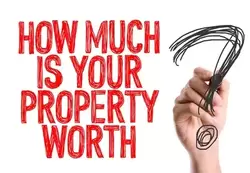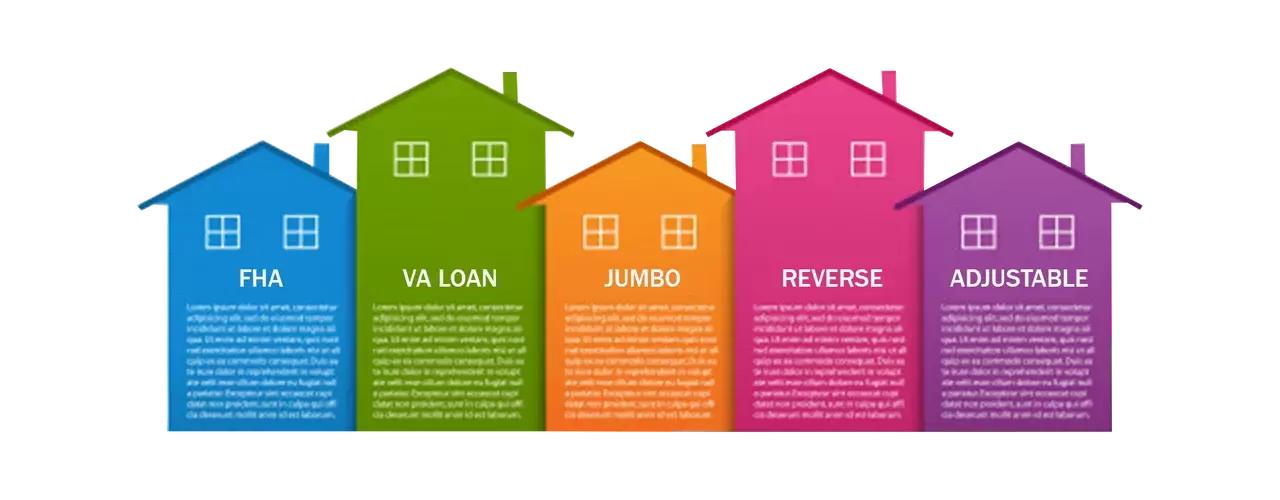|
All mortgages can be divided into two main categories: conventional and government loans. Additionally, each of the various mortgage programs can be classified as fixed rate loans, adjustable rate loans, or a combination of the two. In this technical bulletin, we’ll discuss government and conventional loans, including conforming vs. non-conforming loans.
Government vs. Conventional Loans: About 20% of all home loans in the U.S. are insured or guaranteed by an agency of the federal government and are considered government loans. The remaining 80% of residential mortgages are referred to as conventional loans. GOVERNMENT LOANS FHA Loans: The Federal Housing Administration (FHA), which is part of the U.S. Department of Housing and Urban Development (HUD), was established in 1934 during the Depression in order to stimulate the U.S. housing market. The FHA administers various mortgage loan programs, although the FHA is not a money lender; instead it issues federal insurance against losses to FHA-approved lenders who make FHA loans. FHA loans have lower down payment requirements and are easier to qualify for than most conventional loans. FHA loans cannot exceed the statutory limit, which is set for each county. For example, the legal limit for an FHA loan in the Denver metro area, currently (2020) ranges from $575,000 for 1 living-unit homes to $1,105,800 for 4 living-units. VA Loans: Like the FHA, the VA does not lend money of its own. VA loans are guaranteed by U.S. Department of Veterans Affairs, which allows veterans and service persons to obtain home loans with favorable loan terms (usually without a down payment), thanks to provisions in the GI Bill of Rights passed in 1944. It is easier to qualify for a VA loan than a conventional loan, and lenders generally limit the the maximum amount of a VA loan. VA determines a borrower’s eligibility, and, if a borrower is qualified, VA will issue a certificate of eligibility to be used in applying for a VA loan. VA-guaranteed loans are obtained by making application to private lending institutions. RHS Loan Programs The Rural Housing Service (RHS) of the U.S. Department of Agriculture guarantees loans for rural residents with minimal closing costs and no down payment. The RHS is part of the USDA’s Rural Development Program, which came about as part of the Farmers Home Administration (FmHA) reorganization in 1995. Ginnie Mae, which is part of HUD, guarantees securities backed by pools of mortgage loans insured by these three federal agencies— FHA, or VA, or RHS. Securities are sold through financial institutions that trade government securities. State and Local Housing Programs In addition to the federal government, many states, counties, and cities provide low to moderate housing finance programs, down payment assistance programs, or programs tailored specifically for a first time buyer. These programs are typically more lenient on the qualification guidelines and often designed with lower upfront fees. Also, there are often loan assistance programs offered at the local or state level such as MCC (Mortgage Credit Certificate) which allows a tax credit for part of the interest payment. Most of these programs are fixed rate mortgages and have interest rates lower than the current market. Conforming: Conventional loans may be conforming or non-conforming (while virtually all government loans are considered conforming). Conforming loans have terms and conditions that follow the guidelines set forth by Fannie Mae and Freddie Mac. These two stock holder owned corporations purchase mortgage loans complying with the guidelines from mortgage lending institutions, package the mortgages into securities, then sell the securities to investors. By doing so, Fannie Mae and Freddie Mac, like Ginnie Mae, provide a continuous flow of affordable funds for home financing that results in the availability of mortgage credit for Americans. Fannie Mae and Freddie Mac guidelines establish the maximum loan amount, borrower credit and income requirements, down payment, and suitable properties. Fannie Mae and Freddie Mac announces new loan limits every year. The conforming loan limit in 2020 for a single-family residence is $575,000. (By comparison, the single-family loan limit in 2002 was $300,700.) The two-family loan limit is set at $736,100 in 2020.The 2020 three family and four-family limits are $889,800 and $1105,800, respectively. Properties with five or more units are considered commercial properties and are handled under different rules. The maximum loan amount is 50 percent higher in Alaska, Hawaii, and the U.S. Virgin Islands. Non-Conforming Loans: Although it may have a negative ring to it, a non-conforming loan may be the ticket to homeownership for many with unusual circumstances. Non-conforming loans are for buyers whose situations do not “conform”to strict Fannie Mae/Freddie Mac underwriting guidelines. Not long ago, non-conforming loans were considered riskier than conforming loans and therefore borrowers were subjected to higher interest rates and larger down payments. However, this traditional way of thinking has changed in many lending circles, and now many lenders find it more attractive to offer non-conforming loans. Because jumbo loans are bought and sold on a much smaller scale, they still often have a slightly higher interest rate than conforming, but the spread between the two varies with the economy. Jumbo Loans: The most important difference between conforming and non-conforming loans is loan limits. First lien mortgages above the maximum loan amount eligible for purchase by Fannie Mae and Freddie Mac—currently $575,000—are known as “jumbo” loans. Jumbo loans are often subject to an interest rate pricing premium as well as to some additional underwriting restrictions. Because they are larger and more involved, jumbo loans also are usually governed by stricter standards than conforming loans. It is not uncommon for jumbo loans to have unique income and mortgage insurance requirements. All types of loans (fixed-rate, ARMs, and balloon) are available in jumbo loans. Subprime Loans Loans that do not conform because they do not meet the borrower credit requirements of Fannie Mae and Freddie Mac are called subprime loans, also known as “B,” “C,” and “D” paper loans (vs. “A” paper conforming loans). The good news is that credit specifications for B/C loans can be more lenient than other types of financing. This makes them an attractive choice for borrowers who are self-employed, have complicated tax returns, do not wish to disclose or document income, want to recoup equity from their homestead, have recently filed for bankruptcy or foreclosure, or have had late payments on their credit reports. Subprime loans offer temporary financing to these applicants until they can qualify for conforming “A” financing. The interest rates and programs vary, based upon many factors of the borrower’s financial situation and credit history. These loans often close faster, have reduced or no reserve requirements, allow for expanded use of loan proceeds, and provide higher levels of cash out for debt consolidation.
0 Comments
|
Categories
All
Archives
September 2022
|




